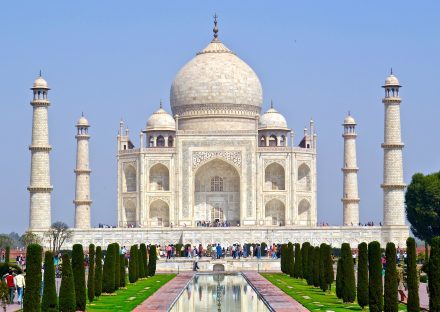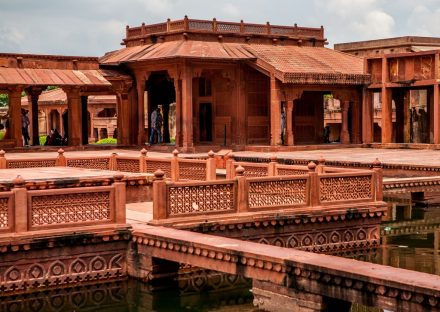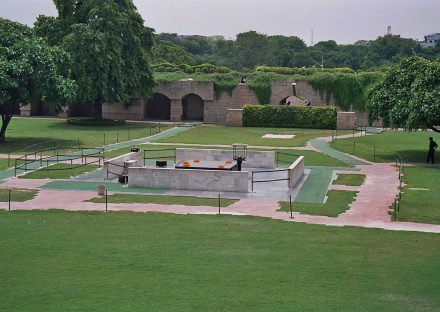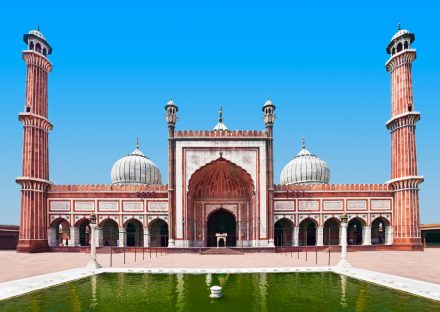- Details
- Itinerary
- Location
- Photos
Tour overview
Delhi-Jaipur-Fatehpur-Agra
Ancient and mysterious India attracts countless guests. And all because it has a unique history and culture, the monuments of which are preserved throughout the country. But the sights of India are not only temples and fortresses. There are still many luxurious parks and reserves, where you can see rare animals. And the rest on the quiet Indian beaches will be remembered for a lifetime.
Day 1
Arrival in Delhi by international flight. Upon arrival, you will meet with our representative outside the airport and go to the hotel. Check in at the hotel. Overnight at the hotel in Delhi.
Delhi, the capital of India, is home to 16 million people, making it the third largest city in India. The strategic location of the city made it an attractive destination for invading armies, and it served as the capital of many great empires that ruled India. Many of these empires have built significant monuments, but the Mughals and Englishmen are the most visible, and while driving through the city you will see the ruins of previous capitals, which were early, dating back to the 12th century.
Day 2
Breakfast at the hotel, after breakfast, a departure from the hotel, and then a city tour in Old Delhi, a visit to Jama Masjid, Raj-ghat and drive past the red fort with a guide. People are constantly pouring into and out of the mosque, and the presence of a nearby bazaar means that the area is noisy. Raja Gat is a simple memorial to Mahatma Gandhi. He is also known as the "father of the nation." Enjoy a rickshaw ride in Old Delhi, passing through a narrow strip of Chandani Chow. Afternoon sightseeing of New Delhi, including Qutub Minar, India Gate, Parliament Buildings and Presidential Palace. Later move to Jaipur. Upon arrival check-in at the hotel.
Mosque Jama Masjid is the cathedral mosque of the Indian city of Delhi. This is one of the oldest and most beautiful mosques in the country, long recognized as a historical and architectural monument and protected by the state.
Jama Masjid Mosque was built in 1656. Jama Masjid Mosque has a very special meaning for Muslims all over the world. Numerous relics of Islam are stored here, the most important of which is the handwritten Quran with pages of buckskin. But even the non-religious tourists make a strong impression on the mosque - this place is literally saturated with history and leaves few people indifferent.
Raj Ghat is a place revered by all the people of India. Mahatma Gandhi was cremated here who was the leader of the liberation movement. In 1948, he was killed by an assassin. Today, the memorial has become the place where the three most famous people in India who left a very significant mark on its history were cremated. These are Mahatma Gandhi, Indira Gandhi and Rajiv Gandhi.
Qutub Minar is the highest minaret in India. It has a diameter of 14.32 m at the base and about 2.75 m from the top, with a height of 72.5 m. Qutbud-Din Aibak laid the foundation of the Minar in 1199 AD to use the muezzin to call for prayer and raised the first floor, to which three more floors were added by his successor to brother-in-law, Shamsu'd-Din Iltutmish. All floors are surrounded by a projected balcony surrounding the minaret and supported stone brackets, which are decorated with an intricate design, more noticeable on the first floor.
Day 3
Breakfast at the hotel. After breakfast at the hotel, sightseeing tour of Jaipur. Full day excursion to Jaipur, visit Amber Fort, City Palace, Observatory and Hawa Mahal (Palace of Winds). You can feel the magic of bygone times, rising to the tops of the fort on the backs of elephants. Overnight at the hotel in Jaipur.
Jaipur is a maze of fascinating bazaars, luxurious palaces and a futuristic observatory, Jaipur was the inspiration of Sawaii ruler Jai Singh, who moved the capital from Amber in 1727. Jaipur is located in a geometric grid of streets and squares, which makes it one of the earliest planned cities in India. In honor of the visit of Prince Edward, Prince of Wales, the city was painted in rich terracotta, a tradition that lasted for many years. It is for this reason that Jaipur is often called the "pink city." Today it serves as the capital of the state of Rajasthan.
Amber or Amer is a classic romantic palace of Rajasthan. Its construction was started by Maan Singh in 1592 and completed by his descendant Jai Singh. Its simple appearance contradicts the inner paradise, where the beautiful fusion of Mogul and Hindu styles finds its final expression.
The city palace is a delightful mix of Mughal culture and traditional architecture of Rajasthani, extending over one-seventh of the square in the walled city. It contains the Chandra Mahal, the Sri Govind Dev Temple and the City Palace Museum.
The Jantar Mantar Observatory is the largest and best of the five remaining observatories built by Jai Singh II in different parts of the country. This observatory is made up of huge astronomical instruments that are still in use.
The decorative facade of Hawa Mahal or the “Palace of the Winds” is an outstanding architecture in Jaipur. This is a five-story structure of sandstone, plastered in pink, with 953 balconies and windows. Built in 1799 by Pratap Singh, Mahal was the residence of the women of Maharaja.
Day 4
Breakfast at the hotel. After breakfast, visit Fatehpur Sikri (Dead City), the political capital of the Mughal Empire of India under the rule of Akbar, from 1571 to 1585. A visit to the residential complex of Emperor Akbar, a mosque and the tomb of Salim Chisti. After visiting Fatehpur moving to Agra. Upon arrival in Agra Visit Agra-Fort. Overnight at the hotel in Agra.
Fatehpur Sikri is located 40 km from Agra. In former times, under Emperor Akbar I, this city was the capital of the Mughal Empire. However, the lack of water caused the decline of Fatehpur Sikri, and soon he lost his former status.
Agra is a city in northern India, in the state of Uttar Pradesh. From 1528 to 1658 was the capital of the Mughal Empire. Now it is one of the largest tourist centers in India, thanks to the buildings of the Mughal Empire and, in particular, the Taj Mahal. Agra is located on the banks of the river Yamuna.
Agra-fort is a fortification in the Indian city of Agra, which served as the residence of the rulers in the era of the Mughal Empire. The construction of the fort itself began in 1565 on the initiative of Akbar the Great, who in 1558 transferred the capital from Delhi to Agra. Here he reconstructed the old and half-ruined fort Badalgar (according to the court historian Abdul-Fazal). Already in 1571, the fort was completely enclosed by a wall of Rajasthan red sandstone. The successors of Akbar the Great, above all Shah Jahan, expanded the fort at the beginning of the 17th century. During the reign of Akbar, preference was given to red sandstone with marble elements, while during the reign of Shah Jahan white marble with patterns of gold and precious stones was used as a building material.
Day 5
Breakfast at the hotel. After breakfast, visit the Taj Mahal (the Taj Mahal is closed on Fridays). Moving to Delhi. Airport transfer.
The Taj Mahal is a mausoleum mosque located in Agra, on the banks of the Jamna River. It was built by order of Tamerlan’s descendant, the Padishah of the Baburid Empire, Shah Jahan, in memory of the wife of Mumtaz Mahal, who died in childbirth of the fourteenth child. Later, Shah Jahan himself was buried here.
Google Maps API Key is not set. You can add your Google Maps API Key under Customizer > Misc options panel. If you do not have one yet then create by clicking here.




